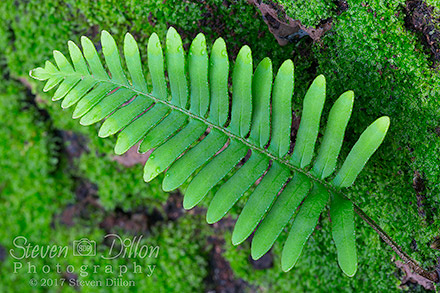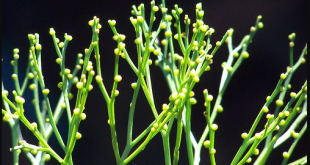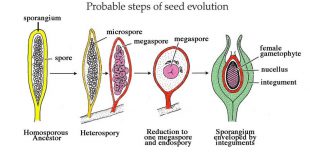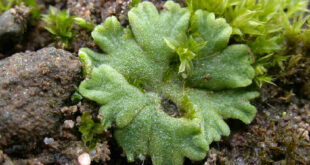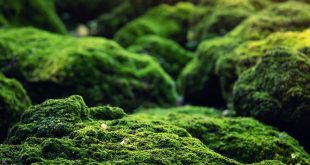They are the earliest known vascular plants that originated in the Silurian period (400 million years ago) of the Palaeozoic Era and subsequently diversified and formed the dominant vegetation on earth during Devonian to Permian period. There are controversies regarding their origin and evolution. There are two broad theories about their origin: according to one, pteridophytes have originated from an algal ancestor, while the other school supported the bryophytic origin hypothesis of pteridophytes.
Algal Origin
Many scientists believe that pteridophytes have originated from algae, though they are not unanimous about the type of ancestral algae. The concept of the algal origin of pteridophytes is based on the similarity between algae (specially chloro- phyceae) and pteridophytes.
Church’s hypothesis
According to Church (1919) and Arnold (1947), the immediate progenitors were probably the brown algae, Church in his essay on the “Thallasiophyta and the sub-aerial transmigration” suggested a polyphyletic origin of the vascular land plant. He believed that the vascular plants arose from the primitive ancestor that was green, planktonic, marine, and probably members of Phaeophyceae.
According to his hypothesis,
- This was probably a plant that grew along the ocean shores.
- The shoreline was slowly raised then it became benthic.
- A portion of the thallus was transformed into an absorptive structure. It was the hypothetical plant thallasiophyta with little differentiation.
- It is believed that after a portion of the thallus penetrated the ground another portion became erect and formed the main axis.
- The land plants may have evolved from this hypothetical plant by the development of an epidermis and vascular tissues.
Bohlin’s Hypothesis
According to Bohlin(1901), Lotsy(1909), and Fritsch(1916) pteridophytes originated from filamentous Chaetophorales of Chlorophyceae. Later on, in 1945, Fritsch suggested that the pteridophytes originated from an erect and parenchymatous green alga with an isomorphic lifecycle.
Mehra’s Hypothesis
According to P.N. Mehra (1968), the ancestors of land plants are to be found among the green algae. He opposed the polyphyletic origin of vascular plants. While agreeing that the different groups of pteridophytes diverged from the very beginning, he argued that all of them have come from a common group.
Mehra (1968) suggested that pteridophytes evolved from chaetoporaceus green algae with heterotrichous growth habits and showed isomorphic alternation of generation before they colonized the land. Such algae give rise to protoarchegoniate which evolved structural complexity and gave rise to vascular plants in a biphyletic manner.
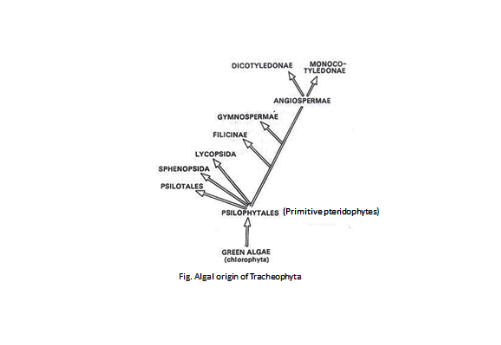
Bryophytic origin
Similarities between Bryophyta and Pteridophyta:
- Gametophytic structures are similar (thallus).
- Ontogeny (Development of organs) and sex organs are relatively similar
- Semi-pendant type of sporophyte/ embedded sporophyte present.
- Alternations of generation are comparatively similar.
- Encapsulated or, jacket layer present.
- Both need water for the act of fertilization.
Bower and Zimmerman’s Hypothesis
According to Bower(1935) and Zimmerman(1938), the two groups (bryophytes and pteridophytes) are phylogenetically connected but they originated in two distinct ways from the primitive archegonia-type land plants.

Campbell’s Hypothesis
According to Campbell(1895) and Smith(1955), pteridophytes have arisen from an anthocerotean (horn worts) type of bryophytes.
Power’s Hypothesis
Power (1908, 1935) hypothesized the following evolutionary line:
Green Algae → Bryophyte → Pteridophyte
He mainly said that from Green Algae → Riccia to Anthoceros → pteridophytes.
Prokaseur’s Hypothesis
Prokaseur (1960) compared the capsule of an anthocerotalean genus Dendroceros crispus with the sporangia of Horneophyton and emphasized the origin of Rhyniaceae from Antherotales.
But the bryophytic origin of the pteridophytes has been opposed by Hentz (1927), Jennings (1928), Christensen (1954), and Schwartz (1955), who said that the bryophytes may have originated by simplification or degeneration from the psilophytean ancestors.
Origin of pteridophytes from an intermediate ancestral group:
The ancestral group proposed by different scientists:
- Protopteridophyta – Tansley (1908)
- Preotohepatiques → Lignier (1911)
- Anthorhyniaceae – Mehra and Handoo (1953)
- Prototrachaeophyte – Schuster (1966)
- Protoarchegoniate – Mehra (1963)

Evolution onto land
The theory of Evolution of the alternation of generation is found in pteridophytes. In pteridophytes, the diploid phase is dominant while the haploid phase is reduced and nutritionally independent. Although the algae show both isomorphic and heteromorphic life cycles, those of pteridophytes are excessively heteromorphic.
There are two theories that interpreted the nature, relation, and origin of alternation of generation in the phylogeny of land plants.
i) The anti-thallic or interpolation theory
The type of Algal ancestors that gave rise to the land plants was a haploid plant. They assume that sporophyte generation evolved after the colonization of land by gametophyte plants. They cite examples of Choleochaete for explaining the origin of a sporophytic generation.
The evolution of the new sporophyte was the result of the postponement of meiosis in the zygote until the development of a multicellular structure. Gradually through increased sterilization of sporogenous tissue, the larger sporophytes evolved.
ii) The homologous or transformation theory
The sporophyte is simply the modification of the gametophyte. The ancestor green algae had two morphologically similar haploid and diploid generations. The gametophytic generation underwent reduction and the sporophytic generation evolved structural complexity after invading the land. They cite examples of Ulva, Fritschiella, and Cladophora as the possible precursors of the land.
Related Articles
References
- Class note.
 Plantlet The Blogging Platform of Department of Botany, University of Dhaka
Plantlet The Blogging Platform of Department of Botany, University of Dhaka
